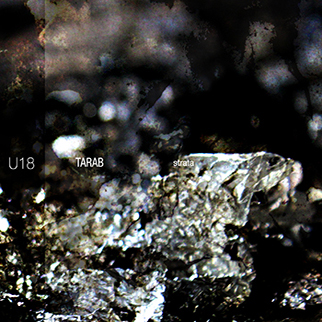 Eamon Sprod records music in the field, but don't mistake the product of his labor for a field recording. In some hands microphones and tapes are used to capture the buzz of insects or the sound of rain pelting the land—whatever the subject might be—with the intent of faithfully reproducing those sounds later in a living room or in a pair of headphones. Replication is the documentarian's craft. Sprod's is magnification. He singles out particular noises, brushes them off and, like a geologist or an archaeologist, excavates them from the sediment of ordinary commotion. His efforts yield an enlarged world of microscopic rhythms and porous surfaces, small remnants that point to the unbroken environments from which they were culled. But Sprod re-purposes those extractions as musical vehicles too, for both re-hearing and re-imagining the world.
Eamon Sprod records music in the field, but don't mistake the product of his labor for a field recording. In some hands microphones and tapes are used to capture the buzz of insects or the sound of rain pelting the land—whatever the subject might be—with the intent of faithfully reproducing those sounds later in a living room or in a pair of headphones. Replication is the documentarian's craft. Sprod's is magnification. He singles out particular noises, brushes them off and, like a geologist or an archaeologist, excavates them from the sediment of ordinary commotion. His efforts yield an enlarged world of microscopic rhythms and porous surfaces, small remnants that point to the unbroken environments from which they were culled. But Sprod re-purposes those extractions as musical vehicles too, for both re-hearing and re-imagining the world.
Strata is a telling title. Maybe the perfect title for this album, because, in order to get what he wants, Sprod has to dig into the dirt. He trains his microphones on the gritty crunch of busted concrete and loose gravel, buries them in the ground to pick up the vibrations of subway trains, and lets them loose over a wide surface where dogs bark and the hum of cars, planes, and other machines mingle chaotically. Most public spaces are filled with sounds like these, but they pass by unnoticed for a variety of reasons: visual distractions pull our attention away from them or other sounds roar rudely into our ears masking the quieter noises that smolder in the dark. Some sounds require special equipment to hear and other times there is simply too much happening to catch it all at once. Whatever the case, our senses fail to report the entire scene. Sprod's method of recording and composing brings those silenced sounds back to consciousness, with a twist.
They arrive incrementally and without context, fragments of the vacant lots Sprod recorded near Macaulay Station and Moonee Ponds Creek in North Melbourne, Australia. From the piston-pumping whoosh of car engines on a raised highway to the sibilant hiss of old pipes; from birds chirping to creaking boards, to tape distortion and the harmonic ring of metal on metal, each scene appears out of the blue, placed shoulder to shoulder with its neighbors by means of sudden cuts, quick fades, and clever mixing. Rhythm and pace take precedent over the sounds themselves as Sprod turns his attention from subject to subject. A barrage of noise is followed by an expectant stillness. Dogs bark. Someone kicks a pile of rubble over with their boots and subtle effects creep surreptitiously into their midst. In places the recordings are slowed down or sped up, or are manipulated in some way to add variety.
Strategies like these might have come about as Strata took shape, or they could have been planned out in advance. The blueprint suggested by the title shows through in the way Sprod organizes his sources, but nothing like a composition can be gleaned from that organization. In absence of an outline, it’s very likely that each sequence and edit was decided by the material itself and by Sprod’s ear. There is a peak here and valley there not because of any guiding principle or master plan, but because that sequence seemed appropriate at the time and made for good music. Thoroughness might also have contributed to the album's build, as Strata uses much of its time to focus our attention on overlooked (or under-heard) phenomena. Events move through the frame only after they've been treated meticulously and no sooner. What counts as meticulous depends entirely on interest, and since this is Sprod's record, it's his interests that matters.
By intuition or by whim, Strata takes shape. And from that shape both music a deepened field materialize. All the nooks and crannies usually obscured by the bigger picture come to the fore, as if blown up under a microscope, and they bring two of North Melbourne's deserted locales back to life with them. Not just by virtue of their sounds; the music reaches further than that. It travels through the audible frequencies and into the brain where it teases the imagination to work. An awareness of how these places must have felt emerges. It's a subjective report, filtered through Eamon Sprod's subjective lense, but it captures the lay of the land in a way that few documentary recordings could.
samples:
 
Read More

